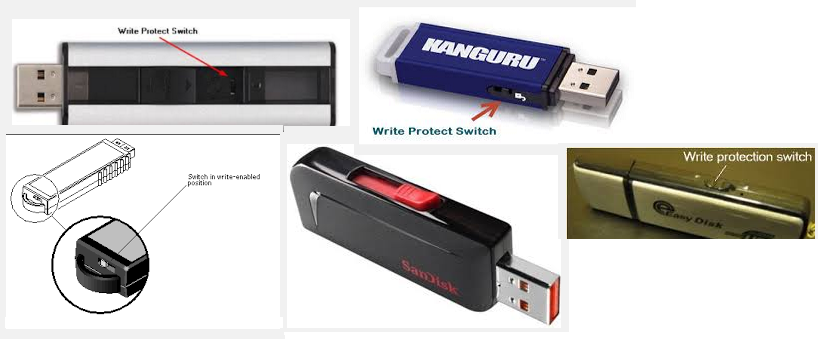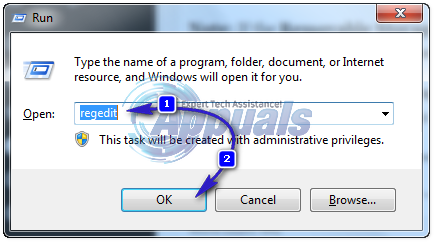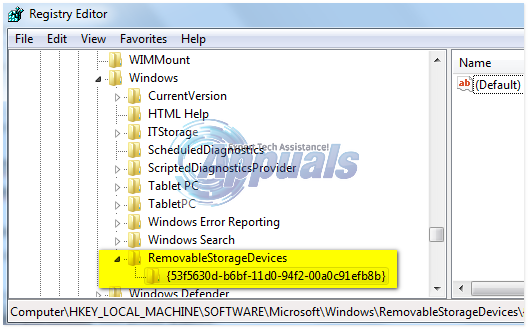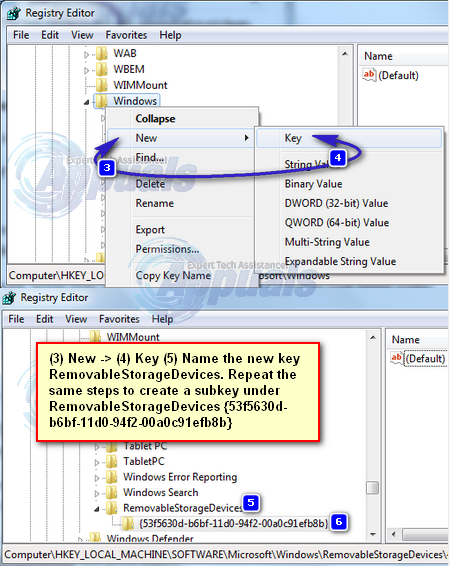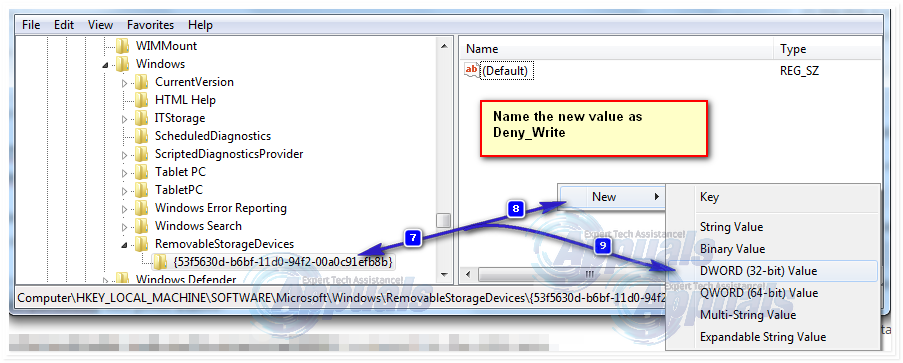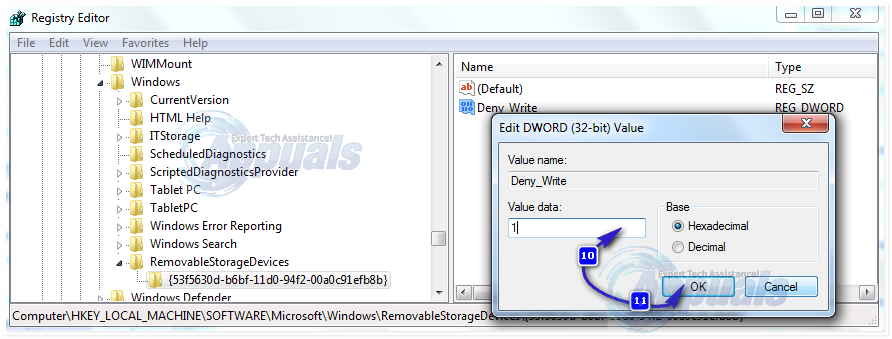How to enable or disable write protection for a removable disk drive
The following methods can be used to enable or disable write protection for a removable disk drive:
Method 1: Use a physical switch
Many removable disk drives such as MicroSD card adapters and USB flash drives come with dedicated physical switches that can be toggled to enable or disable write protection for them. These switches are most commonly located on the sides of the storage medium in question. These switches also override any write protection preferences that are set on the computer they are connected to.
Method 2: Enable or disable write protection for removable disk drives via the Registry Editor
You can also enable or disable write protection for ALL removable disk drives, and to do so, you will need to fiddle around with your computer’s Registry Editor. It should be keenly noted that using this method will turn write protection on or off for ALL removable disk drives – from USB flash drives to flash memory cards. Press Windows Logo key + R to open a Run dialog. Type regedit into the Run dialog and press Enter.
Navigate to the following directory in the left pane of the window:
Note: If the Removable Storage Devices key does not exist in your case, right-click on Windows, hover over new, click on Key, name it RemovableStorageDevices and press Enter Right-click on RemovableStorageDevices, hover over New, click on Key, name it {53f5630d-b6bf-11d0-94f2-00a0c91efb8b} and press Enter.
Click on {53f5630d-b6bf-11d0-94f2-00a0c91efb8b} to expand it in the right pane. To enable write protection for all removable disk drives, right-click on an empty area in the right pane, hover over New, click on DWORD (32-bit) value.
Name the new value Deny_Write, press Enter, Right-click on the Deny_Write value, click on Modify, type 1 into the Value Data field and click on OK. To disable write protection for all removable disk drives, simply right-click on the Deny_Write value, click on Delete and click on Yes to confirm the action. Close the Registry Editor. Restart your computer, and the changes will be applied once it boots up.
How to enable or disable write protection for any disk drive
To enable or disable write protection on Windows 10 for any disk drive – be it a removable storage device or a disk drive on an HDD or SSD – you need to go through the following steps: (Don’t do it for your Main C:\ Drive). This will result in locking up your drive and since it is being used, while you are on the computer (it may not work) these methods are recommended only for external, or secondary drives. If you want to protect your data, you can either encrypt it or use a password on logon. Right-click on the Start Menu button to open the WinX Menu Click on Command Prompt (Admin) in the WinX Menu. OR Click Start and Type cmd then right click cmd and choose Run As Administrator Type diskpart into the elevated Command Prompt and press Enter. Type list disk into the elevated Command Prompt and press Enter. The Command Prompt will now display a list of all disks connected to your computer. Make note of the Disk ### of the disk you want to enable/disable write protection for. You can use the size of the disks to determine which one you want to enable/disable write protection for. Type select disk # into the elevated Command Prompt, substituting # with the Disk ### (such as 1) of the disk you want to enable/disable write protection for, and press Enter. To enable write protection for the selected disk, type in attributes disk set readonly and press Enter. To disable write protection for the selected disk, type in attributes disk clear readonly and press Enter. Once the command has been executed, write protection will have been enabled or disabled on the selected disk. You can now close the elevated Command Prompt.
How to Fix the ‘You Must Enable System Protection on This Drive’ Error on…How to: Enable / Disable Data Execution Protection in Windows 10Fix: This Disk is Write ProtectedSOLVED: The folder “iTunes” is on a locked disk or you do not have write…
